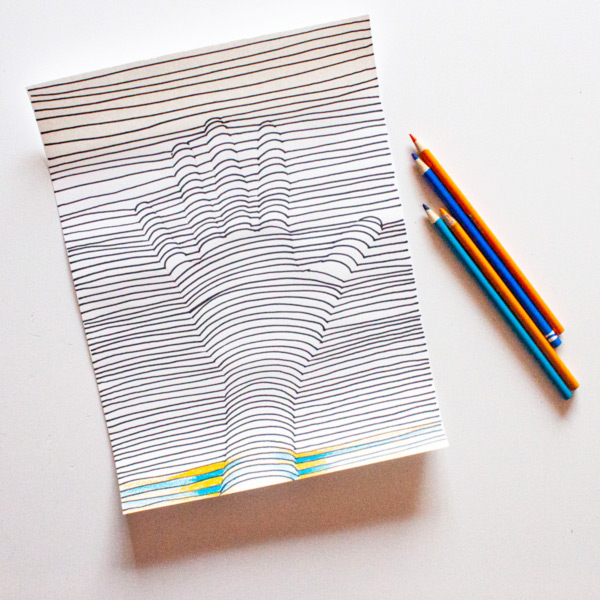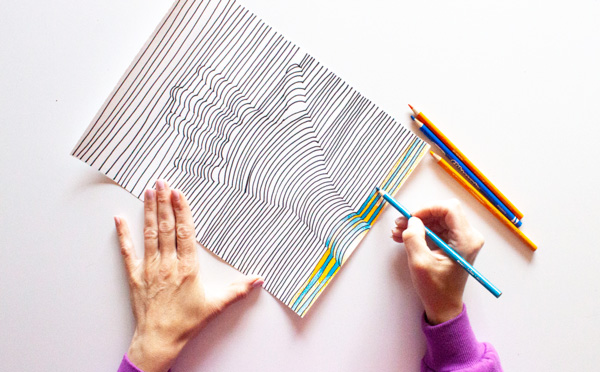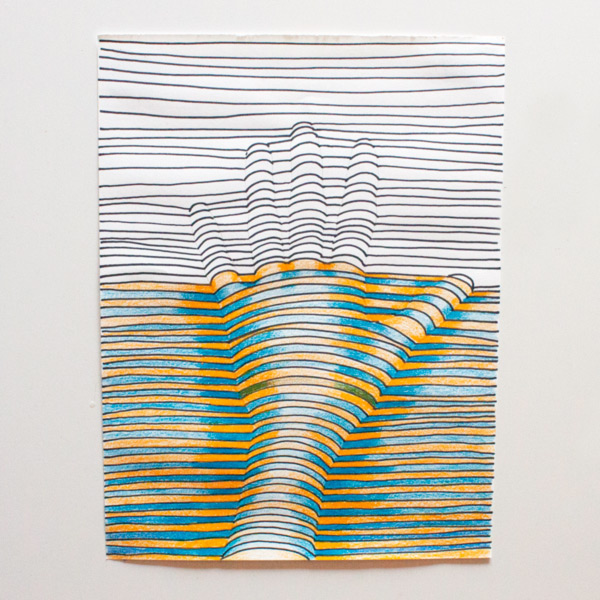Op-Art Drawing
Do you like illusions? Unleash your inner artist and illusionist with this fun optical illusion challenge! Learn how to use line patterns and color tones to create new visual interpretations on paper.



Materials:
- Drawing Paper
- Colored Pencils
- Thin Black Sharpie/Marker
- Pencil
- Eraser
Step 1: Lightly trace your hand on the piece of paper with a pencil. Include your wrist to get a better optical effect.
Step 2: Using a thin-tipped marker, begin at the bottom of the page where you traced your wrist, draw an upwardly curved line from one side of your wrist to the other. Next, draw a straight line from one side of the paper to the other that connects to the two sides of the curved line.
Step 3: Repeat drawing straight, thin black lines across the paper and connected curved lines inside the hand to the top of the paper. Space out the black lines to where they are a half-inch to an inch apart. The illusion will be lost if the lines are too far apart.
Step 4: Once all of the black lines are drawn, choose a color palette of two or more colored pencils.
Step 5: Color in between the black lines with the colors chosen. Color the background area a flat, mid-tone. The areas around the edge of the hand should be the darkest and most heavily shaded. The areas of the hands should go from mid-tone to very light. This shading technique will enhance the illusion of dimension.
Ideas to take your optical illusion hand art drawing to the next level:
- Trace your hand multiple times on the same paper.
- Shade one side of your hand to look like it is sitting on top of the paper.
- Draw two of your hands on separate sheets of paper and cut them out after coloring. Then interlock the fingers of both hands. This would be a cute idea for a birthday, Mother’s Day, or Father’s Day!
- Trace other objects that interest you to create a unique composition.
Learning and Discussion Questions:
1. Consider color theory in the op hand drawing. How can color schemes be applied to the drawing based on the color wheel? A. Compare two op-hand drawings. How do complementary colors compare to analogous color in reference to contrast and three-dimensionality of the drawing?
2. Optical Illusions are a fun and exciting art form that works to trick the brain. Use this link to discover more illusion activities!
Thank you to our sponsor, PNC Arts Alive!, for helping to make this video possible!


